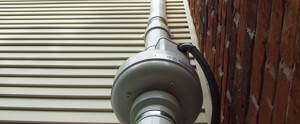Radon Testing Guidelines
Unless otherwise requested, our Radon Measurement Technicians will place the Radon testing device(s) in the lowest livable area of the house or area with "potential" to be finished, i.e. unfinished basements.
If testing is performed during a real estate sale the test MUST be done in the lowest liveable area.
- Test devices should be placed at least 20 inches off of the floor.
- Test devices should be a minimum of 4 inches away from other items.
- Test devices should be at least 12 inches from a wall, or three feet from the wall if there is an exterior window or door nearby. (Three feet is recommended in all cases)
- Test devices should not be near any drafts, natural or not.
- Test devices should not be within three feet of exterior doors.
- Testing should not be done in a kitchen, bathroom or laundry room. This is because test kits are susceptible to humidity. Test devices should be away from heat and areas of high humidity
- Close any air vents that would force air across the testing device.
- Turn off all air moving devices during the test. This would include ceiling fans, dehumidifiers, regular fans, HEPA or any other kind of filtering device that moves air.
- Do not operate fireplaces or heating stoves during the test unless they are your main source of heat. Ceiling fans on a different floor than the testing device are okay to operate.
- If the test is placed in the basement and there is an unsealed sump-pump pit, testing should be 10 or more feet from the pit.
- If you have a crawl space in addition to your basement, you should also consider a test in the room above the crawl space.
Closed House Conditions for Radon Measurement
The required closed house conditions for short term testing are to simulate the closed condition expected about 70% of the year in most homes.
Twelve hours prior to the test, all exterior windows and doors need to be closed and remain closed during the test to equalize the air pressures between the inside and outside of the home. Normal entry and exit from the home is permitted.
Run your HVAC system as if someone is living in the home if it is vacant. Also, if there is an air-to-air exchanger, it should be left on, unless you don't use it at all or just once in awhile. If the furnace or central air is turned on, make sure they are set to "auto" mode. The fan should not run consistently.




